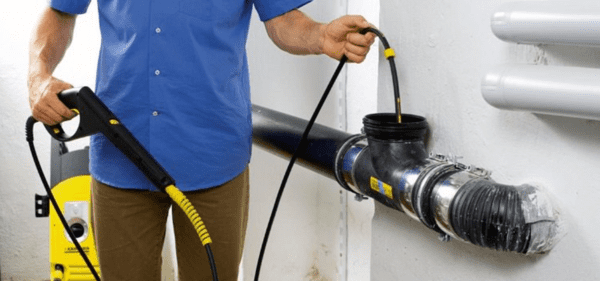
A sewer line inspection is an essential aspect of homeownership that is often overlooked. It can identify potential issues early, prevent costly repairs, and ensure a healthy living environment. This article will provide a comprehensive guide to understanding sewer line inspections and their costs.
II. Why Sewer Line Inspections Matter
A. Identifying potential issues early: Regular sewer line inspections can help detect problems such as blockages, tree root intrusions, and pipe damage before they escalate into more significant and expensive issues.
B. Preventing costly repairs: By catching issues early, homeowners can save thousands of dollars on repairs and avoid the inconvenience of dealing with a malfunctioning sewer system.
C. Ensuring a healthy living environment: A properly functioning sewer system is vital for maintaining a sanitary and safe home. Inspections can help identify and address potential health hazards caused by sewer line issues.
III. Types of Sewer Line Inspections

Visual Inspection A professional checks the sewer line for visible issues. $100 – $250 Video Camera Inspection A specialized camera is used to inspect the pipe’s interior. $300 – $500 Pipe Locating & Mapping Technology is used to locate and map the sewer line. $100 – $500 Additional Services Services required after initial inspection. Variable, depends on scope
VII. Sewer Line Inspection Tips for Homeowners
A. When to schedule an inspection: Schedule inspections when buying a new home, when experiencing frequent sewer backups or slow drains, or as part of routine home maintenance.
B. Preparing for the inspection: Ensure the sewer line is accessible, and clear any obstructions that could hinder the inspection process.
C. Understanding the inspection report: After the inspection, the provider will deliver a detailed report outlining their findings. Make sure to discuss the report with the inspector, asking questions and seeking clarification as needed.
D. Planning for potential repairs: If issues are identified during the inspection, consult with the provider and other professionals to determine the best course of action for repairs, considering factors such as cost, urgency, and potential long-term impacts.
VIII. Conclusion
A. Recap of sewer line inspection costs and factors: Sewer line inspection costs can vary depending on the method used, the length and accessibility of the sewer line, geographic location, and any additional services required. Understanding these factors can help homeowners budget for inspections and repairs.
B. The importance of regular inspections for maintaining a functional sewer system: Regular sewer line inspections are crucial for early detection of potential issues, preventing costly repairs, and ensuring a healthy living environment.
C. Encouragement to research and choose a qualified inspection provider: Homeowners should take the time to research, compare, and select a reputable and experienced sewer line inspection provider. By doing so, they can protect their investment, maintain a safe and healthy home, and avoid unexpected expenses related to sewer line issues.
FAQs
Does washing machine drain into sewer line?
Yes, washing machines typically drain into the sewer line. The wastewater generated from washing clothes is discharged through a drain hose, which connects to a dedicated drain pipe or a shared drain pipe with other plumbing fixtures. This wastewater eventually flows into the main sewer line and is directed to the local wastewater treatment facility or a septic system, depending on the property’s setup.
How much water should be in sewer line?
Sewer lines are not meant to hold standing water. They are designed to transport wastewater efficiently away from a property. However, some water should be present in the drain traps connected to individual fixtures, such as sinks, toilets, and showers. These traps hold a small amount of water to create a seal that prevents sewer gases from entering the home. The actual amount of water in these traps may vary, but it is typically just enough to create an effective seal.
How long does cast iron sewer pipe last?
Cast iron sewer pipes can last anywhere from 50 to 100 years, depending on various factors such as the quality of the material, installation, soil conditions, and exposure to corrosive elements. Cast iron pipes have been largely replaced by more durable materials like PVC and ABS plastic in modern construction. However, older homes may still have cast iron sewer pipes. Regular inspections and maintenance can help ensure that these pipes continue to function properly and last as long as possible. If you suspect that your cast iron pipes are nearing the end of their life, it’s essential to consult with a professional to determine whether replacement is necessary.
Related Articles:
How To Avoid Capital Gains Tax When Selling a House?
Earnest Money Explained: What Is a Good Faith Deposit?
7 Top ‘We Buy Houses’ Companies in Alabama: A Comprehensive Guide
Florida Housing Market Predictions 2023: What to Expect
The Complete Guide to Sewer Line Inspection Costs
A sewer line inspection is an essential aspect of homeownership that is often overlooked… READ MORE
